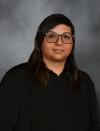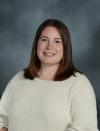The Cornell University Medical College was established in 1898 in New York City. It was formed by a group of physicians led by Dr. Henry P. Loomis, Dr. Lewis Atterbury Stimson, and Stimson's college friend from Yale, Colonel Oliver Hazard Payne, the wealthy son of a founder of Standard Oil. They were unhappy about a misunderstanding concerning New York University's management of the combined institutions of the University Medical College of New York University and Bellevue Hospital Medical College. Following a court decision, the group seceded from New York University to become a part of Cornell University. Most of the faculty of the University Medical College of New York University, four faculty members from Bellevue Hospital Medical College, as well as 215 of their students joined Cornell. Colonel Payne gave $1.5 million to Cornell University for equipment and a new building on First Avenue between 27th and 28th Streets, opposite Bellevue Hospital, to house the medical college and a dispensary or clinic. Dr. William M. Polk, Professor of Obstetrics and Gynecology, was appointed Dean. From the start, there were at least 15% women in each class, an innovation for that time. In addition, starting in 1908, the medical college joined Harvard and Johns Hopkins in requiring a college degree or its equivalent for admission.
From the outset, medical students saw patients primarily in Bellevue Hospital. Many hospitals, including New York Hospital, were used for teaching, depending on where faculty members had staff appointments.
In 1906, Dean William M. Polk arranged for Cornell students to work, rather than just observe, on the wards of Bellevue Hospital. In 1911, Cornell established clinical clerkships at Bellevue Hospital in medicine, surgery, neurology, and urology, all of which became known as the Second (Cornell) Division of Bellevue Hospital. By 1913, Cornell appointed the staff for the Second Division.
In 1912, the medical college took steps to formalize its relationship with New York Hospital. This cooperative arrangement was stimulated by gifts from George F. Baker and Colonel Oliver Hazard Payne. In 1927, a decision was made to build New York Hospital-Cornell Medical Center, which opened in 1932. The General Education Board of The Rockefeller Foundation contributed $2.5 million to the medical college for the endowment of the basic science departments. For details concerning the development of the medical center, please refer to the History of the Medical Center.
In 1998, the medical college was formally renamed as the Joan and Sanford I. Weill Medical College of Cornell University, in honor of its two longtime supporters. Later it was shortened to Weill Cornell Medical College.
Loomis Laboratory
In 1886, Colonel Payne established a research laboratory building across the street from Bellevue Hospital in honor of his physician, Alfred L. Loomis. His son, Henry P. Loomis was appointed Professor of Materia Medica, Therapeutics and Clinical Medicine when Cornell University Medical College was formed in 1898. At first, the medical college used the facility for student laboratories. Later, Loomis Laboratory evolved into the research facility for the medical college. The laboratory was moved to New York Hospital-Cornell Medical Center in 1932, becoming part of the Department of Pathology.
Russell Sage Institute of Pathology
Another research unit, the Russell Sage Institute of Pathology, became part of the medical college in 1912. This followed the remarkable medical research effort launched in 1910 by Dr. Graham Lusk, Professor of Physiology of Cornell University Medical College at Bellevue Hospital, and Dr. Eugene DuBois, Director of the Russell Sage Institute of Pathology. Some of the most distinguished medical academicians received all or part of their research and clinical training in this institute, including: Drs. Henry Richardson, Joseph Aub, James Howard Means, John J. Peters, Russell Cecil, David P. Barr, William S. McCann, Ephraim Shorr, Paul Reznikoff, Samuel Z. Levine, and Soma Weiss. When New York Hospital-Cornell Medical Center opened in 1932, the Russell Sage Institute of Pathology moved to the new center.
Second (Cornell) Division of Bellevue Hospital
The Second (Cornell) Division of Bellevue Hospital continued to function even after the majority of the faculty moved to New York Hospital-Cornell Medical Center in 1932. After World War II, the Second Division became active in postgraduate work for returned veterans, with the financial support of the American College of Physicians and the Kellogg Foundation. The division closed in 1968 because of social and economic change and increasing interest from New York University Medical College in absorbing all of the responsibility for Bellevue patients. The faculty and investigators disbanded; many went to North Shore University Hospital, or to New York Hospital-Cornell Medical Center where they occupied the nearby Kips Bay Building on 69th Street.
Ithaca Division
At the same time that the medical college was opened in 1898 in New York City, Cornell University established a two-year medical course in Ithaca, New York, with automatic transfer to the medical college in New York City for the last two years of training. All female candidates for the M.D. degree were required to take their first two years at Ithaca; men had the option of doing so. By 1910, only the first year course was offered at Ithaca, and women continued to take their first year there. In 1920, women were given the option of taking their first year in Ithaca or in New York City. Finally, in 1938, the medical course in Ithaca was discontinued due to declining enrollment.
Buildings
Over the years, the medical college maintained an active building program. In 1954, F. W. Olin Hall, a residence for students, was opened. The Samuel J. Wood Library and Research Building was constructed in 1962. The William Hale Harkness Building, used almost exclusively for research, was completed in 1968. A second residence, the Jacob S. Lasdon House, was completed in 1974. The William Randolph Hearst Microbiology Research Center was dedicated in 1989. The William and Mildred Lasdon Biomedical Research Center, which opened in 1989, houses the C. V. Starr Biomedical Information Center, a component of the library, and research laboratories for the basic and clinical sciences. Among these is the Margaret M. Dyson Vision Research Center, dedicated in 1991. The Weill Greenberg Center, a state of the art ambulatory care and medical education building, opened in 2007. The Belfer Research Building opened in 2014.
The above history was revised and adapted from "History of the New York Hospital-Cornell Medical Center", an article by Ralph Engle, Jr., M.D., that first appeared in the medical center's Directory of Alumni and Staff, 1980.




